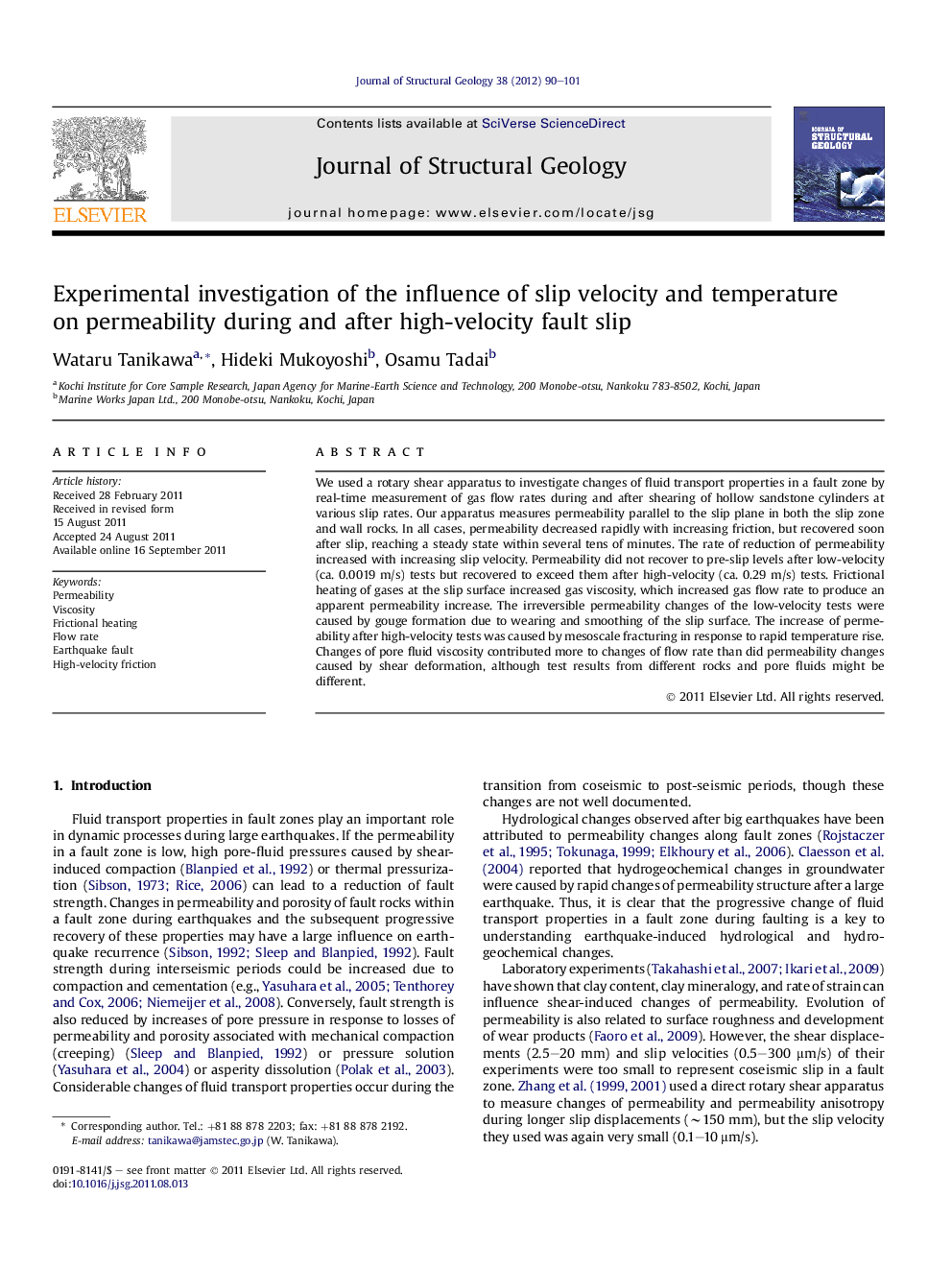| Article ID | Journal | Published Year | Pages | File Type |
|---|---|---|---|---|
| 4733270 | Journal of Structural Geology | 2012 | 12 Pages |
We used a rotary shear apparatus to investigate changes of fluid transport properties in a fault zone by real-time measurement of gas flow rates during and after shearing of hollow sandstone cylinders at various slip rates. Our apparatus measures permeability parallel to the slip plane in both the slip zone and wall rocks. In all cases, permeability decreased rapidly with increasing friction, but recovered soon after slip, reaching a steady state within several tens of minutes. The rate of reduction of permeability increased with increasing slip velocity. Permeability did not recover to pre-slip levels after low-velocity (ca. 0.0019 m/s) tests but recovered to exceed them after high-velocity (ca. 0.29 m/s) tests. Frictional heating of gases at the slip surface increased gas viscosity, which increased gas flow rate to produce an apparent permeability increase. The irreversible permeability changes of the low-velocity tests were caused by gouge formation due to wearing and smoothing of the slip surface. The increase of permeability after high-velocity tests was caused by mesoscale fracturing in response to rapid temperature rise. Changes of pore fluid viscosity contributed more to changes of flow rate than did permeability changes caused by shear deformation, although test results from different rocks and pore fluids might be different.
► Change of permeability during and after shearing was measured by real-time system. ► Rate of reduction of flow rate increased with increasing slip velocity. ► Flow rate was recovered after slip, reaching a steady state within 10 min. ► Change of fluid viscosity mainly contributed to changes of flow rate during sliding.
